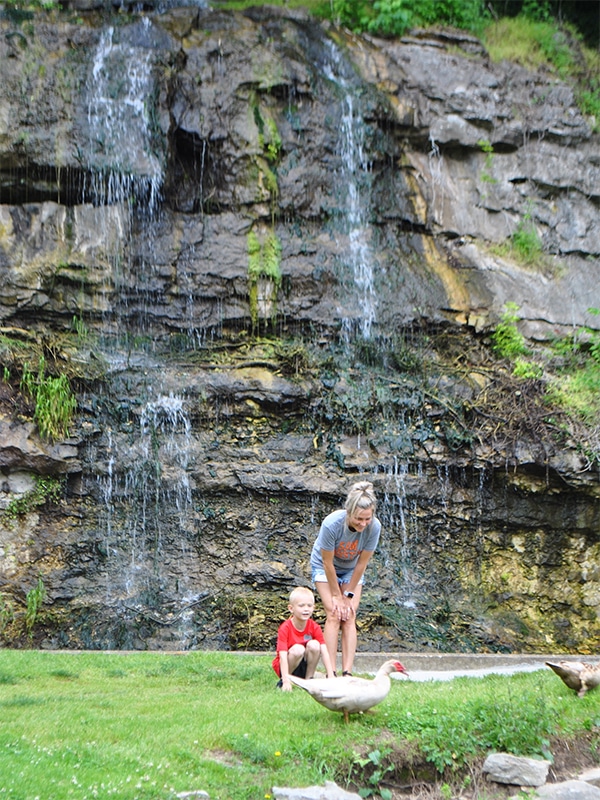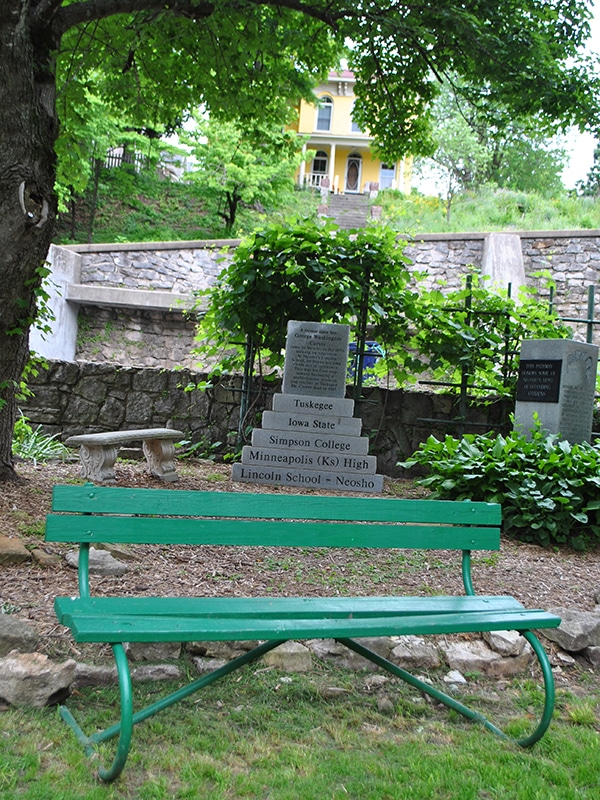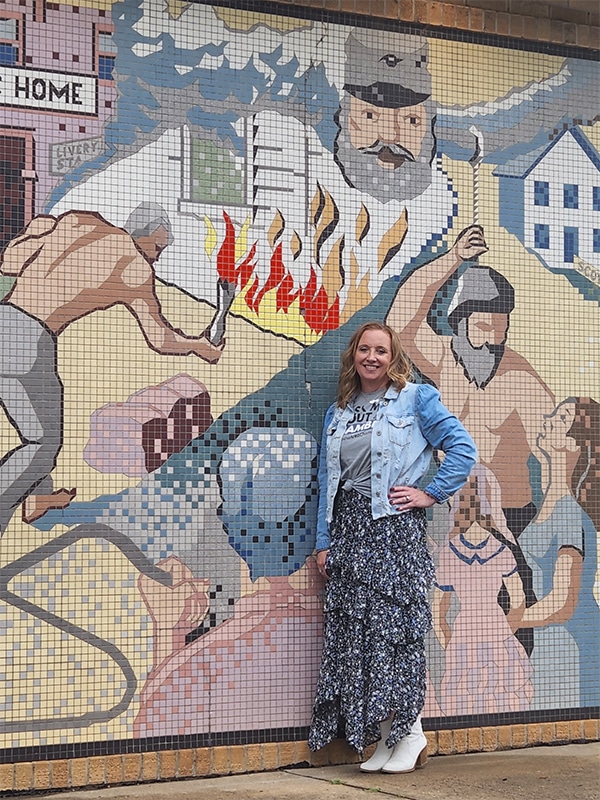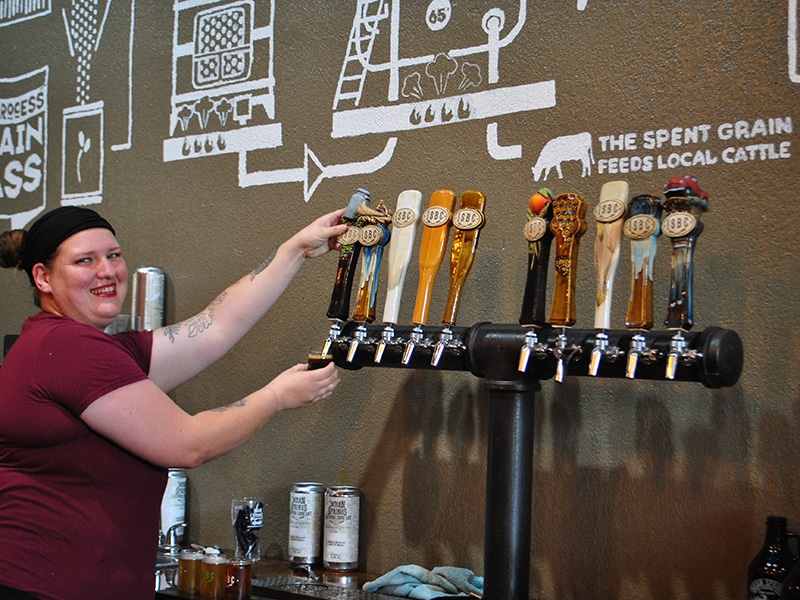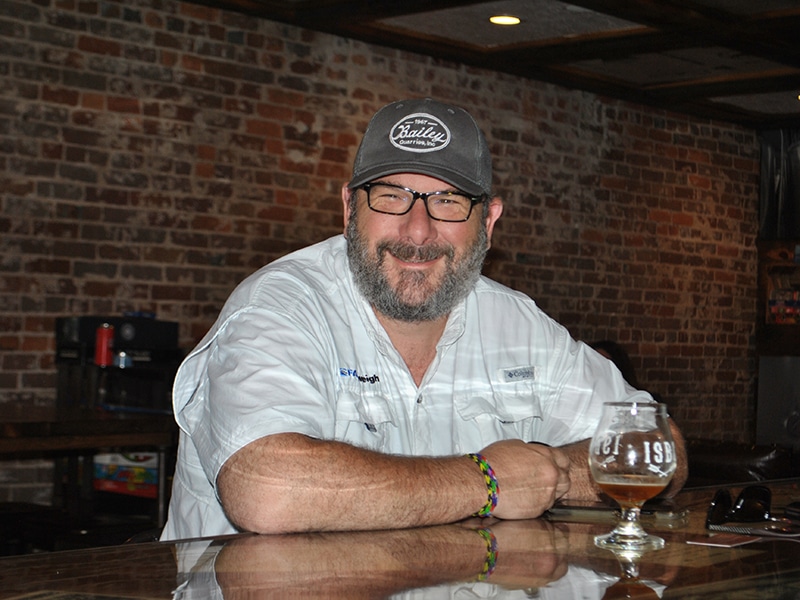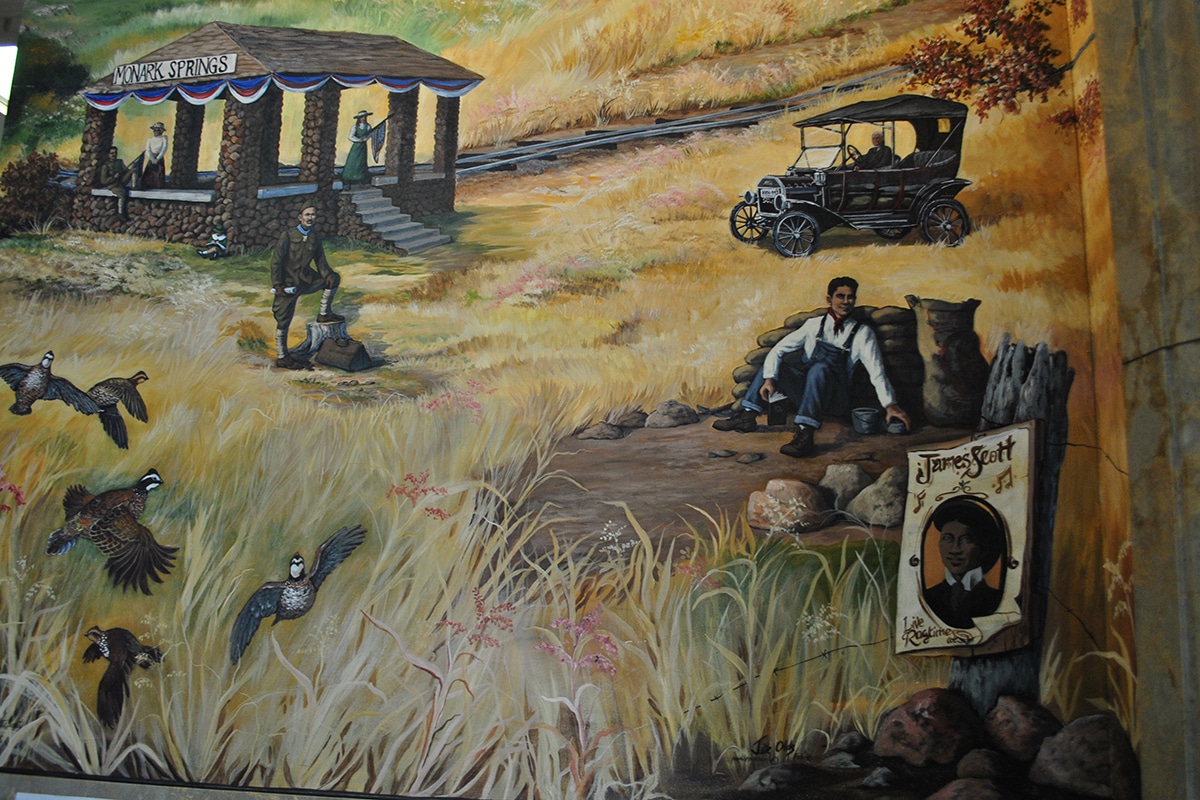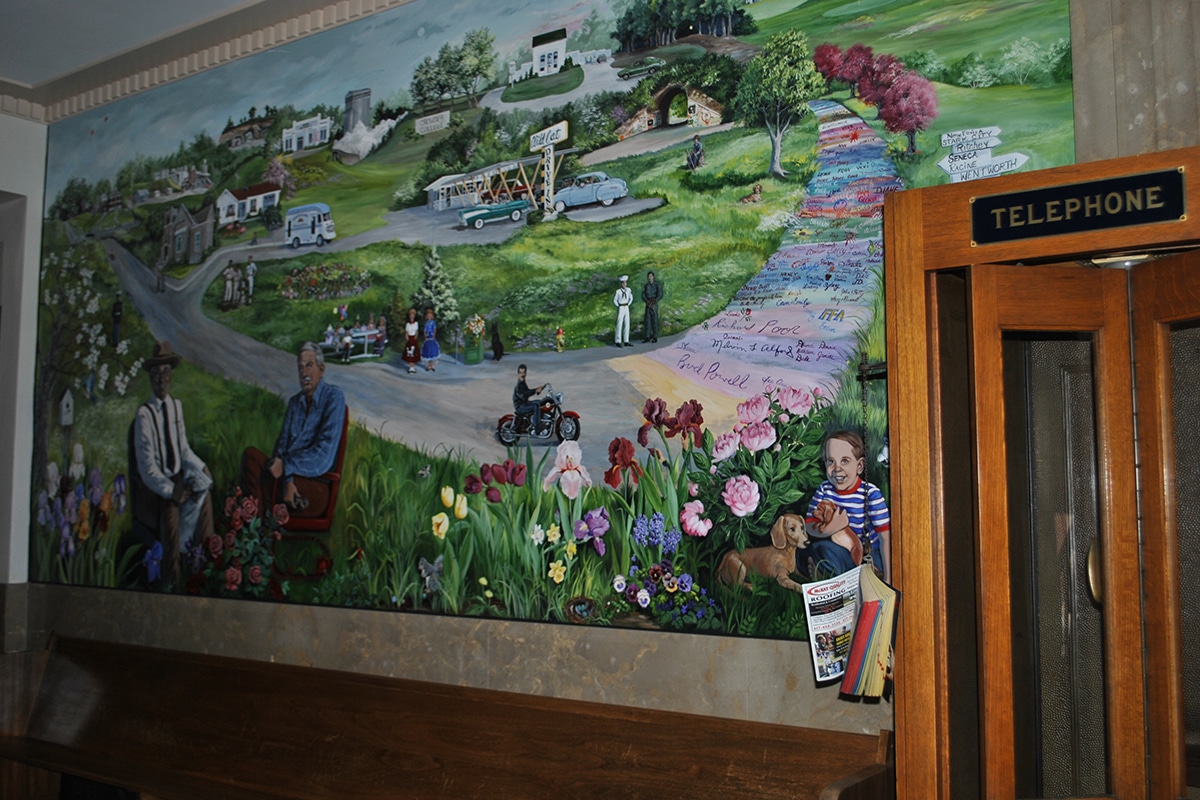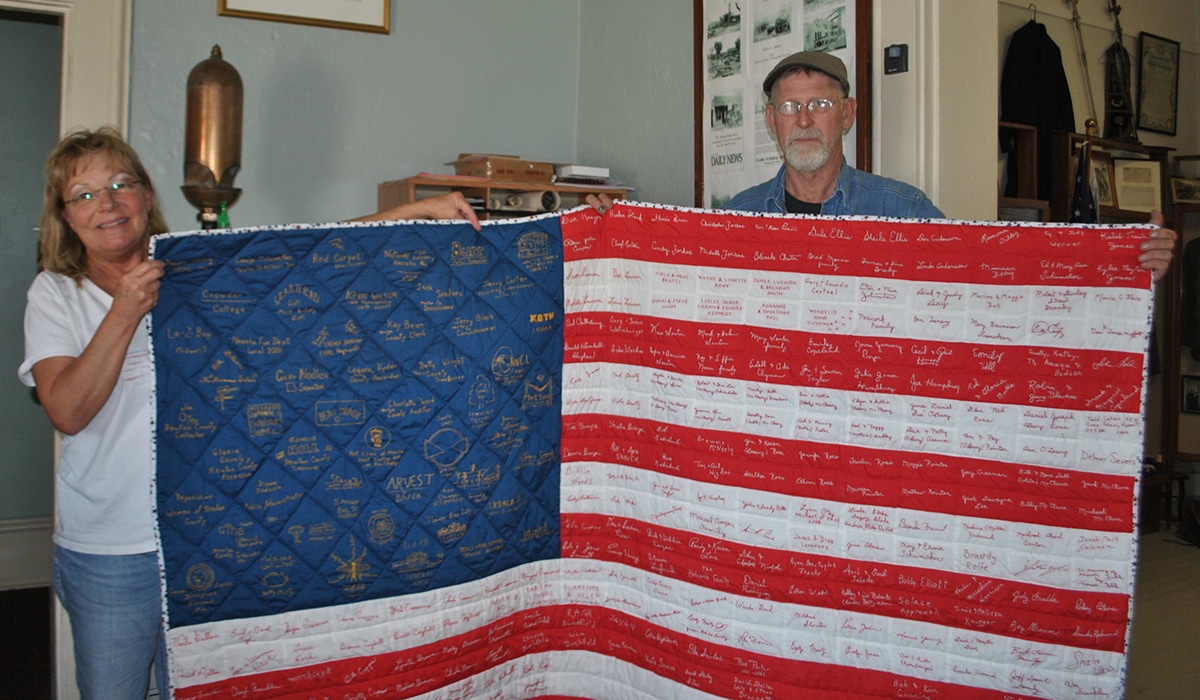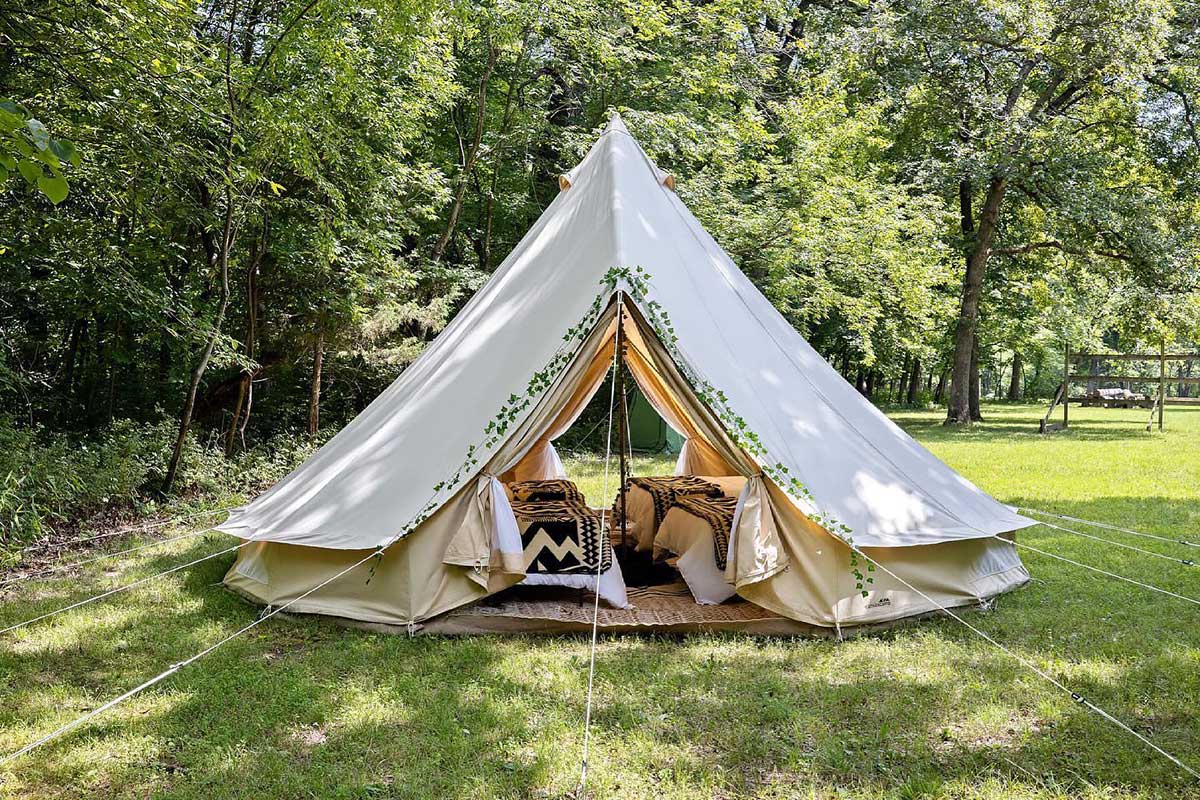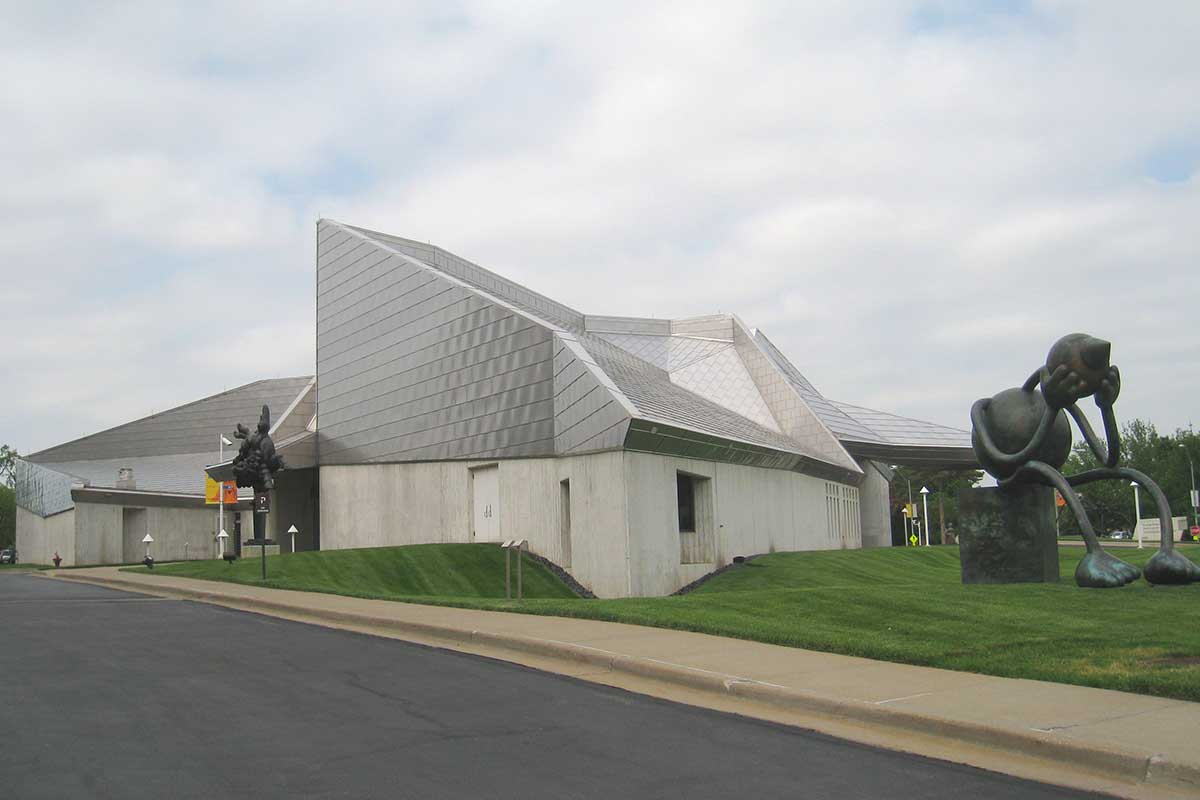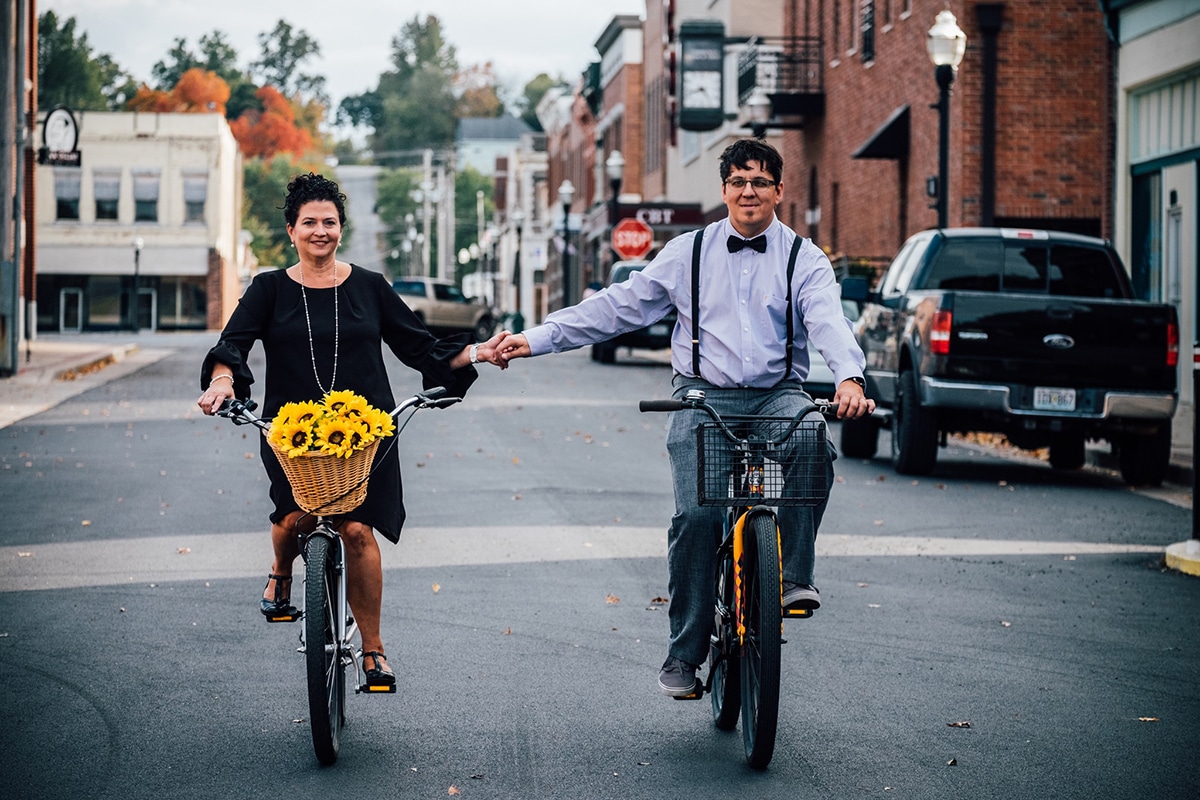
Hometown entrepreneurs spark Neosho’s resurgence.
Growing up in Neosho in the 1950s, Judith Haas Smith had it made.
There were sixteen neighborhood kids—enough for a baseball game at Big Spring Park down the steep hill from her house.
Just up Spring Street, flower boxes decorated the square of the Newton County seat in the southwest Missouri town. Walking or pedaling her bike, Judy could stop to watch a movie or drop by stores where merchants selling everything from clothes to typewriters kept their doors open in the summer.
“And I grew up knowing everybody who was in all those buildings,” says Judith, 81—or Judy, as the Neosho Daily News columnist and retired teacher is known in her hometown.
Nearly a half-century later, Dusty Altman didn’t have the same idyllic experiences downtown. When he and his brothers walked after school to his grandmother’s gift shop there, he says, “There wasn’t a whole lot going on.”
Buildings were dilapidated, even though the commercial district had been named to the National Register of Historic Places in 1993.
These days, though, Neosho is blossoming again—and Dusty, owner of Sam’s Cellar Bar & Oven, is among those recultivating the town they love.
These hometown entrepreneurs are starting to see the fruits of their labors. After more than a decade of reinvestment, Neosho is more like the city focus groups envisioned 15 years ago, attracting new businesses and tourists from northwest Arkansas as well as Missouri.
Says City Manager David Kennedy: “It’s starting to come to pass.”
In his office on the square’s northeast corner, where flower baskets adorn light poles, bike racks dot sidewalks, and four new businesses have opened this year, Dusty agrees.
“It’s just come a long way.”

City of springs
With at least ten natural springs, its name an Osage word for “many waters,” Neosho was literally known for its fruits—especially strawberries—in the 19th century and well into the next century. A festival celebrated the area’s cash crop in the 1940s and 1950s, the late historian Larry A. James writes in “Neosho: The Baby Boomer Years.”
After the Atlantic and Pacific Railroad arrived in 1870, locally grown produce made its way to other markets—and so did beer, National Park Service records say, since wholesale grocer built an ice plant with Anheuser-Busch to keep things cool on the railway.
In fact, due to Neosho’s bountiful springs—the National Fish Hatchery opened in 1888, sending live fish out on the railway, too–Anheuser-Busch once considered opening a brewery there but couldn’t get tax incentives, says Newton County Historical Society President Tim Booyer.
Until 1967, when what became the Frisco—the San Francisco and St. Louis Railway–made its final trip to Springfield, people also came and went on trains, with regular passenger routes running to St. Louis and Tulsa, too, says Deanna Booyer, Tim’s wife and Newton County Historical Society Museum and Park director.
A 1950s photo in James’s book shows first-graders in front of a Kansas City Southern car on a field trip in Joplin. When artist and Neosho native Thomas Hart Benton came back in 1962 with former President Harry S Truman for Thomas Hart Benton Day, they arrived with their families on a special train from Kansas City.
“The railway is a big part of Neosho being what Neosho is,” Deanna says, only minutes after Kansas City Southern cargo cars chugged through town not far from the 1835 building that is now the museum—and was once the county jail and sheriff’s home.
So was Camp Crowder, now Crowder College, built as a military base in 1941. Buses brought soldiers to Neosho on Saturday nights, often to go to Wolfinbarger’s, a luncheonette with a lower-level dirt-floor bar—and a movie.
“At one time, we had four theaters on the square,” Tim says.
“Neosho: The Baby Boomer Years” depicts a flourishing post-World War II community of plenty of celebrations as well as businesses ranging from creameries to car dealerships.
The Flower Box City
In 1954, LIFE magazine founder Daniel Longwell and his wife, Mary Fraser Longwell, retired in Neosho after falling in love with the town during vacations at the Big Spring Inn.
With a passion for flowers stemming from his Nebraska childhood and work as a Doubleday garden book editor, the famous journalist was soon campaigning for more of them, Judy writes in her 2015 book “Larger Than LIFE: The Legacy of Daniel Longwell and Mary Fraser Longwell.”
Living just down the street from the Longwells, Judy visited often and watched as Daniel sowed seeds for a citywide beautification effort, tapping a connection with New York Community Trust to offer $5,000 in prizes to businesses and residents planting the best flower boxes.
Her book also describes how merchants donated seeds, lumber, and fertilizer, while the city and Junior Chamber of Commerce supplied labor to build planters and a community soil pile. In “Neosho: The Baby Boomer Years,” a LIFE reporter and photographer look on as a resident scoops dirt from that pile.
And, Judy writes, “I will never forget the day everybody set a bucket at their curb for probably the only ‘Manure Day’ ever held anywhere.”
Judy describes how citizens got creative: At a hardware store, flowers were planted in a canoe; at a pharmacy, in an oversized mortar and pestle. They bloomed from wrought iron boxes at banks, and “All thirty-six windows in the Courthouse had a planted box of red geraniums.”
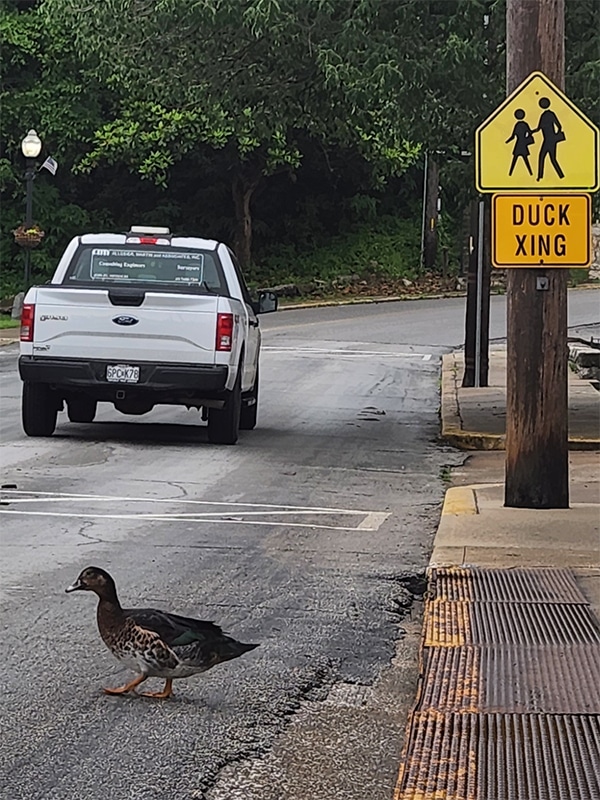
That July, The Flower Box City blossomed with an estimated three thousand flower boxes.
The town continued to flourish.
The next year brought Rocketdyne, a thirteen-million-dollar plant employing more than one thousand area residents to make rocket engines for space missions—including Apollo 11, which put the first man on the moon.
Then, in 1957, Look magazine and the National Municipal League chose Neosho as an All-America City due to its civic contributions. Five years later, when Benton arrived for festivities in his honor, a crowd of some 8,000 people greeted him at the depot.
By then, Gov. Warren E. Hearnes had visited, too, to award the city “five-star” status, James reports.
The Flower Box City was in bloom in more ways than one.
Judy sums it up in “Larger Than LIFE”: “Never has less money been spent on a city project that had such far-reaching results.”
A changing square
“That pride in those flowers was instilled in me,” Lauri Lyerla says.
As a teenager twenty years later, the Neosho Chamber of Commerce’s executive director loved to plant and water flowers outside Mills TV & Appliance, the store her grandparents owned on the square.
“When I was growing up, the entire square was filled with retail,” says Lauri. It was “very vibrant downtown then.”
Nice clothing stores, a five-and-dime, and two movie theaters remaining in the 1970s and 1980s are also what the Booyers remember.
The Orpheum, founded in 1917, was the last to go, Tim recalls, as businesses began to leave the square. Lifelong residents like him agree that after Walmart opened a store there in 1969, then a supercenter in 1993, locally owned stores suffered.
“Walmart killed Neosho,” he says.
The square lost its social atmosphere, too, Judy says, as rural residents who once spent Saturdays there shopping and catching up with city friends stopped coming downtown.
“People started buying their clothes and tools and things out on the edges of town, so they didn’t come in to see everybody on the weekends,” Judy says, looking out over the town from the front porch of her 1867 home.
Lawyers, accountants, and real estate agents kept offices around the 1936 courthouse, yet residents saw other historic buildings deteriorate.
“We had a lot of buildings that were empty, and that didn’t feel good,” Judy says.
New visions
Some saw opportunity in that emptiness—even in a long-vacant 1902 building on the square’s northeast corner.
“This place was a mess,” Dusty says of the property Suzi and John Houseman, his mother and late stepfather, bought in 2005. All his family knew was that they wanted to open a bar and restaurant, he says.
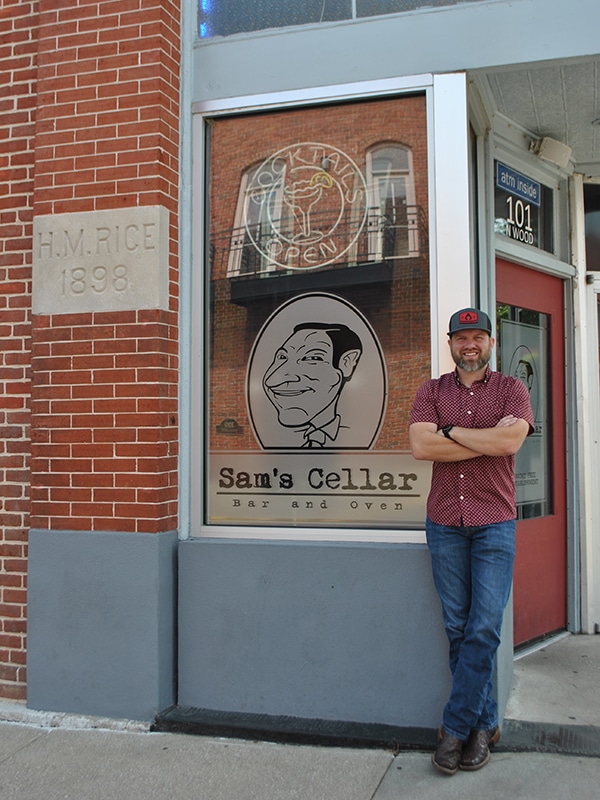
Gutting the building, they hadn’t even chosen a name for it, much less researched its history.
Then teenagers, Dusty and his friends hauled fifty-five-gallon buckets of dirt out of the basement. “I remember our shoulders were dying,” he says. “We couldn’t pick up our arms anymore.”
To expose joists crossing the basement ceiling, they ripped nails out of old wood, too: “I swear there was 500 different nails, and we’d pull them all out by hand because we didn’t want to mess up the floor joists.”
Often, as they worked, curious passersby dropped by, many with the same question.
“People kept stopping in and saying, ‘Hey, what are you guys doing at Sam’s?’”
Sam’s?
Longtime residents explained that Sam had been Sam Wolfinbarger, proprietor of the World War II-era luncheonette and bar popular with Camp Crowder workers and soldiers. What’s more, the family discovered as they dug into history, too, the building’s first owner was Sam Dunaway, owner of the turn-of-the-century The Palace bar.
Then, Dusty says, they had no choice but to put “Sam” in the name of their new business—and use a caricature of Wolfinbarger’s face as the logo.
With support from family, friends and the community, Sam’s Cellar was a success from the start, he says. Many credit that success with steering the historic commercial district’s turnaround, Lauri says.
State grants and tax credits also helped. The same year Sam’s Cellar opened, Neosho received a $400,000 Downtown Revitalization Economic Assistance for Missouri (DREAM) grant through the Community Development Block Grants program. Focus groups formed to envision a lively and pedestrian-friendly future for the district.
With that grant, the town added lights and replaced sidewalks. And with at least $1.4 million in additional state grants over the next two years, low-income residents made repairs and renovations to DREAM-area homes.
Around the square, landscaping, streetscaping and yet more lighting and sidewalk improvements got under way, along with pedestrian trails to Morse Park, the Joplin Globe reported in 2007.
Bringing back the bloom
Three years later, though, the city fired two administrators for misconduct, replaced most of its administrators, then struggled with a budget shortfall of almost $1 million, forcing it to borrow $1.3 million to cover expenses, the Globe also reported.
When Lauri became chamber director after her family business closed in 2013, weeds choked the 66-foot-long railway gondola car that had greeted visitors since 2001 as the World’s Largest Flowerbox. She was nostalgic for the beautiful town she remembered. Finally, at a chamber executive board retreat in 2019, leaders decided to launch a new campaign that could help The Flower Box City live up to its name once more.
“I will never forget the day everybody set a bucket at their curb for probably the only ‘Manure Day’ ever held anywhere.”
As Bring Back the Bloom began, volunteers helped replant the gigantic flowerbox. Just as they had in the 1950s, businesses donated supplies and churches, schools and youth organizations got involved, taking on neglected flowerbeds. Others adopted 66 hanging baskets to honor residents.
One, on a Spring Street lamppost, is in memory of the Longwells.
Today, the campaign continues as “Beauty Spot of the Week” banners are staked in flower beds and pots around town. Bring Back the Bloom has helped unify the community, Lauri says.
“It pulled everybody together in a really positive thing,” she says, adding wryly that people can’t complain much about flowers.
Rejuvenation and community
Meanwhile, new businesses popped up in the historic commercial district to cater not only to locals but a new wave of tourists looking for day-trip destinations.
Indian Springs Brewing Co., the tap room for a McDonald County microbrewery, opened in an 1890s building on the square’s south side in 2017. The same year, The Clay Cup coffee shop and pottery studio opened just north of the square on Wood Street.
And on its corner, Sam’s Cellar was already “busting at the seams” with customers, Dusty says.
Two regulars were Jeff Chase and Susan Eberle. Avid bicyclists who live near the square and had just gotten married at The Clay Cup, they began to “hit up the City Council to get bike racks,” says Jeff, 51.
“It all started with wanting a place to put our bikes downtown, but there was no place to park,” explains Susan, 56, and Jeff adds: “We thought it’d be fun to ride to town, but we just can’t leave our bikes unattended.”
At first, council members weren’t convinced that bike racks could draw day-trippers, even though he and Susan pointed to the example of Bentonville, Ark., less than an hour’s drive away with a world-class system of more than two hundred miles of trails.
Yet as bikes filled the rack that Indian Springs Brewing Co. installed outside its tap room, council members decided to take their own day trip to Bentonville, Jeff says. Now, Neosho boasts about seven miles of bike trails, he says, with two to three more miles of trails planned.
While residents say Neosho attracts tourists as far away as Kansas City, for others, it’s where they hope to stay. There are plenty of newcomers, Lauri says, who are “just in awe of how nice people are, how pretty the town is.”
Neosho’s sense of community is what 33-year-old Adriana Henry, owner of the new Briar & Thistle restaurant on the square, loves about her town. Entrepreneurs support each other, selling each other’s products, and there’s a familiar face around every corner.
“There was a day I walked out of the restaurant, and I saw a buddy coming out of his office. We talked for a minute, and I helped someone else carry groceries into their apartment, and I was like, ‘This is why I like it here, man, this is what it is.’”
And an appreciation for turn-of-the-century architecture had nothing to do with Dusty’s decision to buy Sam’s Cellar from his mother after his stepfather died in 2021. He wanted a job that would give him more time with his two young sons, he says.
“We have a ton of history, but it feels like Neosho’s getting ready to make some new history.”
“If you’re purchasing a building down here, you’re not necessarily purchasing it for the value of the building,” he says with a laugh. “You’re purchasing it because you want to invest in the community, because it’s not a good investment because of the building.”
“All of us are trying to be very Neosho-centric in the sense of trying to get people to support all of us,” Adriana says. “So many of our businesses are willing to work together and do things together in order to benefit the entirety of us.”
As renovations continue and younger generations open businesses in downtown Neosho, lifelong residents like Tim and Judy are happy about what they see.
“We’re very fortunate to have young people coming in investing their time and monies in our downtown area,” Tim says. “They’re building our town back up.”
Judy agrees, saying she enjoys the square’s lively atmosphere. “When the students I had grew up, graduated and began their adult work, then it got exciting down there,” she says. “And that’s what I like now: It’s young people.”
Dusty is glad to be one of them—and excited about the future.
“We have a ton of history,” he says, “but it feels like Neosho’s getting ready to make some new history.”
Events:
- The Neosho Fall Festival is held the first full weekend in October.
- The Neosho Christmas Parade is held the first Saturday in December.
- For more information about events, visit neoshocc.com.
Related Posts
City Scout: Kansas City
A new hotel, restaurant, and brewery comes to KC. Plus, art exhibits you don't want to miss.

